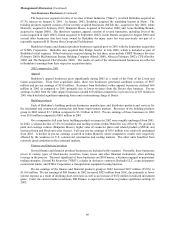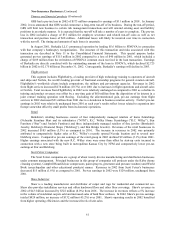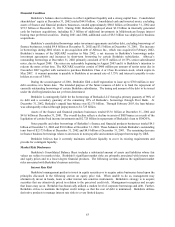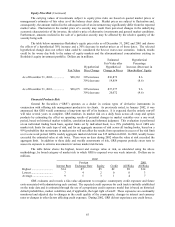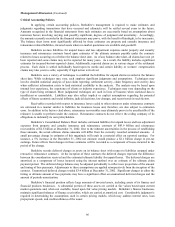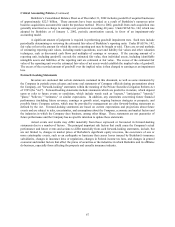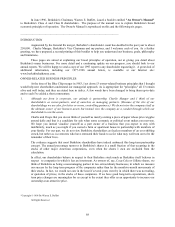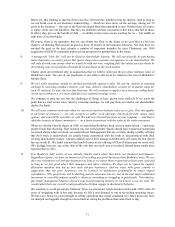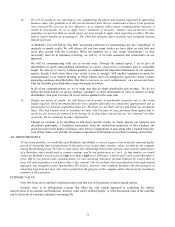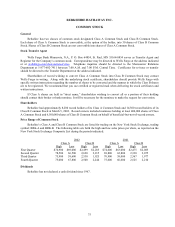Berkshire Hathaway 2002 Annual Report Download - page 68
Download and view the complete annual report
Please find page 68 of the 2002 Berkshire Hathaway annual report below. You can navigate through the pages in the report by either clicking on the pages listed below, or by using the keyword search tool below to find specific information within the annual report.67
Critical Accounting Policies (Continued)
Berkshire’ s Consolidated Balance Sheet as of December 31, 2002 includes goodwill of acquired businesses
of approximately $22.3 billion. These amounts have been recorded as a result of Berkshire’ s numerous prior
business acquisitions accounted for under the purchase method. Prior to 2002, goodwill from each acquisition was
generally amortized as a charge to earnings over periods not exceeding 40 years. Under SFAS No. 142, which was
adopted by Berkshire as of January 1, 2002, periodic amortization ceased, in favor of an impairment-only
accounting model.
A significant amount of judgment is required in performing goodwill impairment tests. Such tests include
periodically determining or reviewing the estimated fair value of Berkshire’ s reporting units. Under SFAS No. 142,
fair value refers to the amount for which the entire reporting unit may be bought or sold. There are several methods
of estimating reporting unit values, including market quotations, asset and liability fair values and other valuation
techniques, such as discounted cash flows and multiples of earnings or revenues. If the carrying amount of a
reporting unit, including goodwill, exceeds the estimated fair value, then individual assets, including identifiable
intangible assets and liabilities of the reporting unit are estimated at fair value. The excess of the estimated fair
value of the reporting unit over the estimated fair value of net assets would establish the implied value of goodwill.
The excess of the recorded amount of goodwill over the implied value is then charged to earnings as an impairment
loss.
Forward-Looking Statements
Investors are cautioned that certain statements contained in this document, as well as some statements by
the Company in periodic press releases and some oral statements of Company officials during presentations about
the Company, are "forward-looking" statements within the meaning of the Private Securities Litigation Reform Act
of 1995 (the "Act"). Forward-looking statements include statements which are predictive in nature, which depend
upon or refer to future events or conditions, which include words such as "expects," "anticipates," "intends,"
"plans," "believes," "estimates," or similar expressions. In addition, any statements concerning future financial
performance (including future revenues, earnings or growth rates), ongoing business strategies or prospects, and
possible future Company actions, which may be provided by management are also forward-looking statements as
defined by the Act. Forward-looking statements are based on current expectations and projections about future
events and are subject to risks, uncertainties, and assumptions about the Company, economic and market factors and
the industries in which the Company does business, among other things. These statements are not guaranties of
future performance and the Company has no specific intention to update these statements.
Actual events and results may differ materially from those expressed or forecasted in forward-looking
statements due to a number of factors. The principal important risk factors that could cause the Company's actual
performance and future events and actions to differ materially from such forward-looking statements, include, but
are not limited to, changes in market prices of Berkshire's significant equity investees, the occurrence of one or
more catastrophic events, such as an earthquake or hurricane that causes losses insured by Berkshire's insurance
subsidiaries, changes in insurance laws or regulations, changes in Federal income tax laws, and changes in general
economic and market factors that affect the prices of securities or the industries in which Berkshire and its affiliates
do business, especially those affecting the property and casualty insurance industry.





